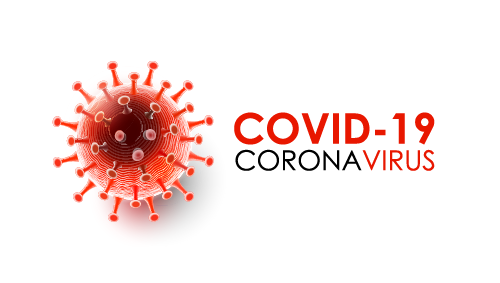
The pandemic caused by the virus, SARS-CoV-2, has descended upon us with a speed and seriousness unprecedented in our modern history. The virus causing the disease called COVID-19 has been revealed to be both stealthy as well as terribly dramatic. The virus and the disease have taken not only the health and lives of many in our country, but also, in the effort to stem the pandemic, our economy as well. As we look forward to an ebb in the number of newly afflicted persons, it is important to now look at our plan to be healthy and get back to work. For those of us serving dental patients, that means we need to assess the tools available to know when we can safely bring our patients to the office. Below is a primer of what tools there are today, and what a laboratory, such as OralDNA Labs, can do to help the profession get ready to serve patients again.
COVID-19: The natural history
As we have come to know, SARS-CoV-2 is a virus that infects the respiratory epithelium cells lining the nose, oral cavity, the trachea and bronchial tubes. Specifically, the virus binds to receptors on the cell surface called ACE2. ACE2 receptors in other tissues, such as blood vessels and smooth muscle, contribute to the control of blood pressure. The function of these receptors in the respiratory epithelium is unknown. Infection involves the virus being taken up into the host cells where the viral genome consisting of RNA is replicated and packaged to produce new virions. These new virions are “shed” from the host cells at very large numbers. One effect of infection is to then cause the host cells to die and fall off or slough from the structure to which they are attached. These sloughed cells accumulate in the trachea and bronchial tubes, causing irritation and local inflammation which is the basis of one of the classic symptoms of COVID-19, a dry cough.
In response to SARS-CoV-2 infection there is, typically, a marked inflammatory response. The immune system acts in basically 2 phases. Early in the infection, cells that make up the innate immune response “see” the virus and signal to other immune cells via the release of cytokines. There are many types of cytokines, and each has their own specific function. Some evoke a fever; others signal the recruitment of more potent “killing” cells that attack the epithelium infected by the virus. Others still signal cells that will process the virus toward the goal to produce neutralizing antibodies. Not surprisingly some of the most critical cytokines involved in SARS-CoV-2 infection include IL-6, IL-1 and TNF-alpha. These cytokines are also key elements of the immune response observed in periodontal infections.
When a patient becomes infected with SARS-CoV-2 there are likely 4 possible outcomes. In most cases, persons with COVID-19 have a clinical course hallmarked by fatigue, a sore throat, a mild fever and possibly the dry cough. But importantly the spectrum of symptoms is very wide and include headache, nausea, diarrhea, shortness of breath, hallucinations, and a loss of sense of smell. There is considerable overlap between this list of symptoms and those common with the common cold and other respiratory viruses – especially influenza. Persons with pre-existing medical conditions are at higher risk for COVID-19 as well as for other respiratory infections. These high-risk persons generally have conditions that involve weakened lungs or diseases of the cardiovascular system. Their clinical course may be very severe and sometimes require treatment with a respirator and other medications to support their heart and lungs function. A third clinical scenario are persons who are without symptoms and do not know they are infected because they are asymptomatic. As we learn more about the natural history of COVID-19 it may well be that the majority of persons infected have this experience. A fourth scenario is called the “cytokine storm.” This response to the viral infection occurs more typically in young persons, sometimes young adults. For some unknown reason, the immune response in these individuals is very exaggerated and there is a full-on release of cytokines that themselves cause severe fevers, respiratory collapse, and cardiovascular failure. A similar phenomenon is known to occur in young people infected by influenza viruses. This catastrophic outcome shows that sometimes the immune response is worse than the disease.
The biology of this virus is that it is both highly contagious and variably virulent. The disease is a respiratory illness that ranges widely in clinical course from no symptoms to a mild respiratory condition to one potentially lethal in those weakened by their pre-existing conditions of health. As we understand more about COVID-19, however, we have learned that most people will become well again.
As we increase our knowledge of SARS-CoV-2, taking strategic steps to identify those with the virus, with or without symptoms, through testing is a crucial phase. Our lab has adapted and has performed the necessary validation to introduce our OraRisk® COVID-19 test. Health care professionals of all backgrounds across the US are significant players in the wider spread testing needed to ensure the health of our population and to reach a new normalcy. Next week in Part 2, we will explore some possible avenues for testing.
For more information on how to become an OralDNA Provider – scan HERE: 
- Article Overview with OralDNA - December 17, 2021
- immun19™: OralDNA® Lab’s NEW COVID-19 Neutralizing Antibody Test - August 27, 2021
- Periodontal Inflammation Primes the Systemic Innate Immune Response - November 20, 2020
